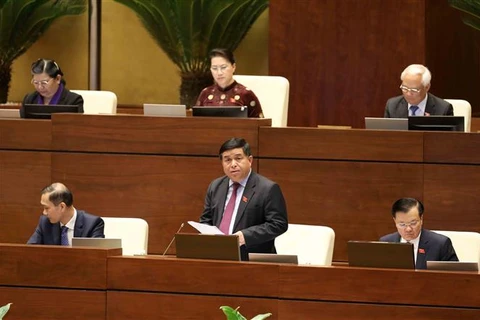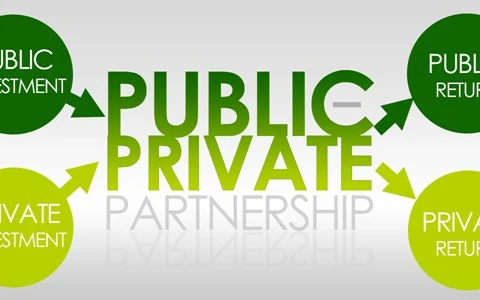 Workers craft handmade household products from natural materials at the Ngoc Son JJC in Ha Nam province (Source: VNA)
Workers craft handmade household products from natural materials at the Ngoc Son JJC in Ha Nam province (Source: VNA) Hanoi (VNA) - The private business sector in Vietnam is vital for the economy, however, obstacles and challenges remain, which can only be overcome through the combined efforts of policymakers and business leaders next year.
This was the conclusion of an economic forum on domestic enterprises’ adaptation capability in a changing economic environment held in Hanoi on December 7 by the Vietnam Chamber of Commerce and Industry (VCCI).
At the forum, Hoang Quang Phong, VCCI’s Vice Chairman, said the government has determined to reduce costs for businesses from 2017 onward, cutting up to 50 percent of unnecessary business licences.
Nguyen Hong Long, deputy head of the Government’s Steering Committee for Enterprise Innovation and Development, stated that the private sector has grown strongly, with nearly 620,000 operating enterprises, contributing to 40 percent of GDP.
It attracts some 51 percent of the nation’s labour force and generates about 1.2 million jobs per year, Long added.
Still, he warned of issues related to the economic model, mainly based on cheap labour and low technology level; which had gradually exhausted natural resources, although efficiency and productivity had still increased significantly.
Doan Trong Ly, director of the Animal Production Processing and Import-Export Jsc (APROCIMEX), stressed that the private sector had been identified by the Government as the focus of support and favourable policies with firm actions taken, including significant tax reforms and customs clearance changes in 2017.
Do Van Ve, deputy general director of Huong Sen Group JSC, was optimistic about 2018’s positive business trend as he believed the national business environment was on the rise.
Many Vietnamese enterprises have recovered with positive signals for a 2018 breakthrough, such as increases in oil and gas exports, textile and garment services and agricultural products, he said.
Statistics from the VCCI showed that Vietnam’s economic targets set by the Government for 2017 are plausible, although forecasts for 2018 highlight issues faced by domestic enterprises that are still limited in capacity and competitiveness, Phong said.
Vietnam has advanced in ranking on several business environment and global competitiveness indexes, Phong emphasised.
Dam Quang Thang, chairman of the Hanoi Agricultural Chemicals Association, said Vietnamese businesses need to be aware of the current world situation, lest they become exploited when Vietnam participates in bilateral or multilateral free trade agreements.
Vietnamese businesses need to readjust their business and work ethics to avoid litigation or penalties upon entering important markets such as Japan and the European Union.
Phan Duc Hieu, deputy director of the Central Institute for Economic Research, said private enterprises must take the initiative to improve competitiveness.
According to Hieu, Vietnam is ranked 93 out of 128 countries in terms of technology absorption capacity. The quality of Vietnamese suppliers is especially weak, with limited number of registered patents, ranking only 91 from 128 countries.
A survey by VCCI showed that 116,000 new businesses were set up from January to December 2017. However, out of all enterprises currently operating, more than 60 percent have reported unprofitable business, which could be either due to incompetence or tax fraud, Hieu added.
According to Ly, domestic enterprises still face many difficulties, including lack of capital, obstructing policies and unresponsive market.
He argued that there is a need to further strengthen risk management and oversight functions within the private sector.
The long-term challenge for Vietnam is to maintain high growth rate coupled with sustainable poverty reduction while continuing to accelerate the process of State-owned enterprises restructuring, improve business environment and remove barriers to productivity improvement, Phong said.
According to VCCI’s report, so far, the 2017 GDP growth target of 6.7 percent is within reach, while all 13 targets set by the Central and National Assembly have been exceeded.
Within the framework of the event held yesterday, VCCI and the Vietnam Accounting-Audit Association announced the launch of a new enterprise capacity assessment programme, focusing on businesses Key Result Indicators and Performance Indicators.
The 2018 Business Forum featured talks from economic experts, business representatives and corresponding authorities, with forecasts, discussions, recommendations and consultations to help businesses identify challenges and seek development opportunities in 2018 and beyond.-VNA
VNA






















